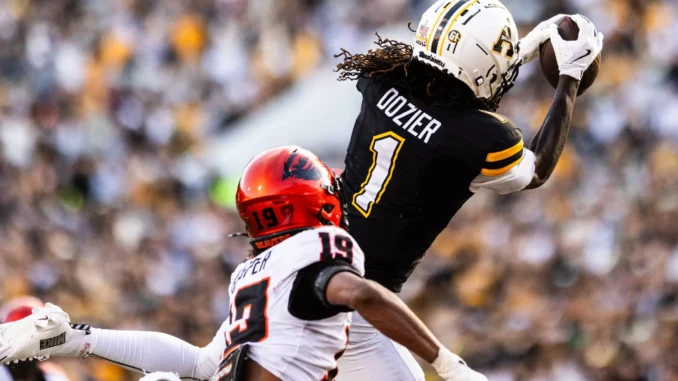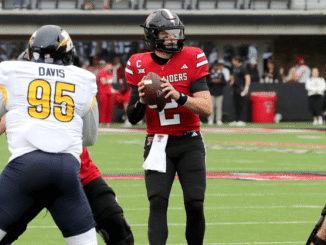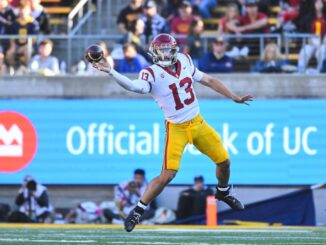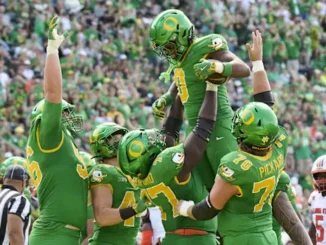
Another week, another agonizing defeat for the Oregon State Beavers. On a crisp Saturday afternoon at Kidd Brewer Stadium, the Beavers fell 27-23 to Appalachian State, dropping to 0-6 for the first time since 1991. What started as a promising cross-country trip turned into a familiar nightmare: a slow start, critical mistakes, and a late-game collapse that left fans wondering if this season could be salvaged.
Despite outgaining the Mountaineers 456-354 in total yards and dominating time of possession (31:30), Oregon State couldn’t overcome self-inflicted wounds. The Beavers drove into Appalachian State territory multiple times in the fourth quarter but came away empty-handed due to interceptions, a failed fourth-down attempt at the goal line, and an inability to capitalize on defensive stops. As head coach Trent Bray put it postgame, “We had opportunities, but we didn’t execute when it mattered most.”
Let’s break down what went wrong in this latest setback and assess whether the Beavers have a realistic shot at turning things around with six games left in the 2025 season.
A Dismal Start Sets the Tone
Oregon State’s ongoing issue with sluggish openings reared its head again. The Mountaineers jumped out to a 17-0 lead in the first quarter, capitalizing on explosive plays and Beaver miscues. Appalachian State’s quarterback JJ Kohl orchestrated efficient drives, including a 68-yard pass to wide receiver Davion Dozier that set up a touchdown, while running back Rashod Dubinion pounded the ground for 98 yards and a score.
The Beavers’ defense, led by Dexter Foster’s 11 tackles, struggled early, allowing 146 yards in the opening frame. Special teams compounded the problem: David Wells Jr. fumbled a kickoff return, handing Appalachian State prime field position for an easy touchdown. Kicker Caleb Ojeda later missed a 28-yard field goal that could have sparked momentum.
This pattern isn’t new. Through six games, Oregon State has been outscored 69-20 in first quarters, putting immense pressure on the offense to play catch-up. As Landon Bartlett, a reporter for the Statesman Journal, noted, “The Beavers are digging holes they can’t climb out of.” Against a fired-up Appalachian State crowd of 35,021—the sixth-largest in Kidd Brewer history—the early deficit felt insurmountable.
Turnovers and Red Zone Woes Doom the Offense
Quarterback Maalik Murphy delivered his best statistical performance of the season, completing 30 of 45 passes for 358 yards and two touchdowns. Wide receiver Trent Walker was a standout, hauling in a career-high 13 receptions for 179 yards, including several clutch grabs that kept drives alive. Wells added two scores—a 30-yard reverse run and a 3-yard reception—while Anthony Hankerson chipped in 64 rushing yards on 19 carries.
Yet, for all the yardage, the Beavers converted just two of five red-zone opportunities into touchdowns. Murphy’s two interceptions, both in the fourth quarter, were killers. The first came on a third-and-goal from the 6-yard line, where he forced a pass into coverage that Colton Phares picked off in the end zone. The second sealed the game: a deep shot to Walker was jarred loose by a big hit from Juan Berchal, with Zyeir Gamble securing the bobbling ball.
The most gut-wrenching moment? With 1:49 left and trailing 27-21, Oregon State drove to the Appalachian State 1-yard line. Three straight Hankerson runs were stuffed, and on fourth down, the Mountaineers’ defense—bolstered by Myles Farmer and Phares—held firm for a turnover on downs. A forced fumble in the end zone moments later resulted in a safety for Oregon State, narrowing the gap to four points, but it was too little, too late.
These failures highlight broader offensive inconsistencies. Despite Murphy’s arm talent, his seven interceptions through six games (tied for a season high with two picks in this matchup) point to decision-making issues under pressure. The running game, averaging under 100 yards for the fourth time this year, lacked explosiveness, and penalties—like a false start on a crucial late drive—didn’t help.
Defensive Resilience Offers a Silver Lining
Credit where it’s due: After the rocky start, Oregon State’s defense clamped down. They held Appalachian State to 10 points over the final three quarters, forced a three-and-out in the fourth, and created the late safety via Aiden Sullivan’s strip of Dubinion (recovered by Kohl in the end zone). Zakaih Saez and others contributed sacks and tackles for loss, limiting Kohl to 13-of-28 passing for 218 yards.
The unit’s grit kept the Beavers in the game, surviving three third-and-long conversions by Appalachian State in the third quarter. As Bray emphasized, “Our defense gave us chances. We just didn’t take advantage.”
Can Oregon State Turn This Season Around?
At 0-6, the Beavers are one of just three winless FBS teams (alongside UMass and Sam Houston State). Their last victory was in November 2024 against Washington State, and road wins are even scarcer—the most recent came in September 2024 at San Diego State. Morale is undoubtedly low, but is a turnaround feasible?
The schedule offers some hope. Next up is Wake Forest (3-2) on October 11 at Reser Stadium for Homecoming, a winnable game against a Demon Deacons team coached by former Washington State boss Jake Dickert. Later matchups include UNLV, San Jose State, and Air Force—opponents Oregon State could match up well against if they fix their flaws.
Keys to salvation:
- Fix the Starts: Bray must emphasize preparation to avoid early deficits. Perhaps more aggressive play-calling or lineup tweaks, like giving backup quarterback Gabarri Johnson more reps if Murphy’s turnovers persist.
- Reduce Turnovers: Murphy’s $1.5 million NIL deal demands better protection of the ball. The offense needs to emphasize short, high-percentage throws early to build rhythm.
- Special Teams Overhaul: Fumbles and missed kicks have cost points in multiple games. Consistency here could flip close losses into wins. On Sunday, Oregon State fired special teams coordinator Jamie Christian.
- Build on Positives: Walker’s emergence as a reliable target and the defense’s second-half adjustments show talent exists. If the Beavers can string together complete games, 3-3 or better in the back half isn’t impossible.
Realistically, though, this feels like a rebuilding year under Bray. The program is navigating independence after the Pac-12’s dissolution, and patience may be required. As one observer put it, “No more excuses—it’s time to execute.” If Oregon State can notch a win against Wake Forest, it might spark a mini-revival. Otherwise, this could spiral toward the program’s first winless season since 1980.
For now, the Beavers head home licking their wounds, hoping Reser Stadium provides the boost they desperately need.



